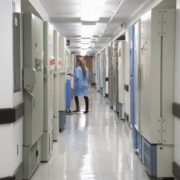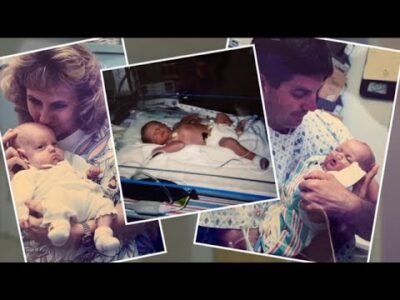A completely paralyzed man is learning how to communicate once again after receiving a new brain implant treatment that allows him to select from a series of binary options when forming words and sentences. Once the man could communicate with the research team, he went right back to his old ways and ordered a beer.
Talking Back
The 36-year-old man suffers from amyotrophic lateral sclerosis (ALS), a progressive neurodegenerative disease that breaks down nerve cells, which reduces physical functionality. Patients diagnosed with this condition usually only have two to five years to live, but new technology can help them communicate using the smallest movements. For example, the famous physicist Stephen Hawking lived another 55 years after his diagnosis. Towards the end of his life, he used a machine that allowed him to communicate using only his cheek muscle.
The man featured in the study titled, “Spelling interface using intracortical signals in a completely locked-in patient enabled via auditory neurofeedback training’, published in the journal Nature Communications, is now going through a similar experience as he learns to communicate using implants in his brain.
The man is considered completely locked-in, meaning he has lost all physical functionality due his condition, including the ability to move his eyes.
This is the first time this technology has been used on a completely locked-in paralyzed patient and it wasn’t clear if the implants would work, but the man is clearly getting back to his old self. After he ordered a beer, he asked the research team to play the band Tool “loud”, so he could hear.
The researchers at the Wyss Center for Bio and Neuroengineering in Geneva, Switzerland first created the technology so that the man could use his eyes to pick from a series of options on the screen, but they had to redevelop the treatment after the patient lost control of his eye movements in 2018.
It took them three months to develop a system where the man uses the implants to choose from a series of “yes” or “no” questions on a screen. The patient needed several weeks to form his first words, but over the months he started composing dozens of sentences.
Transcribing at a rate of around one character per minute, he can now communicate freely with those around him.
One of his first requests was to have his head elevated when there were guests in the room. The nurses compiled by adjusting his body position.
He also requested special types of soup to be put into his feeding tubes, including goulash and sweet pea soup. “For food I want to have curry with potato then Bolognese and potato soup,” he said, according to the study.
He was even able to interact with his four-year-old son and wife, who visited him in the hospital. “I love my cool son,” he uttered using the device.
“Successful communication has previously been demonstrated with BCIs in individuals with paralysis, but, to our knowledge ours is the first study to achieve communication by someone who has no remaining voluntary movement and hence for whom the BCI is now the sole means of communication,” said Dr Jonas Zimmermann, a senior neuroscientist at the Wyss Center.
“This study answers a long-standing question about whether people with complete locked-in syndrome – who have lost all voluntary muscle control, including movement of the eyes or mouth – also lose the ability of their brain to generate commands for communication.”
The researchers noted that this technology can be used in the patient’s home after they receive a few introductory lessons remotely via their laptop.
“This is an important step for people living with ALS who are being cared for outside the hospital environment,” said George Kouvas, chief technology officer at the Wyss Center. “This technology, benefiting a patient and his family in their own environment, is a great example of how technological advances in the BCI field can be translated to create direct impact.”
The group is now raising money to produce more devices that can be used to help ALS patients communicate; however, this technology comes with a price tag of $500,000 for the first two years of care. Researchers at Wyss Center will need to conduct more trials to ensure that it is both safe and effective.
“This is experimental technology, our mission to further develop this technology and improve the lives of people with paralysis,” Zimmerman added.
The cause of ALS remains unknown and there is no cure. It’s not clear how many people are living with the condition in the United States; however, the CDC reports that around 12,000 – 15,000 people in the U.S. have ALS, and every year doctors tell about 5,000 people that they have it.
But this technology is giving patients hope for a brighter tomorrow.
















